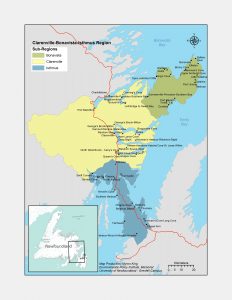
Map of the Clarenville, Isthmus, and Bonavista regions*
Map adapted from work on Functional Economic Regions by A. Simms and J. Ward, Department of Geography and Harris Centre Regional Analysis Lab, Memorial University, St. John’s NL. GIS done by Myron King, Environmental Policy Institute, Grenfell Campus of Memorial University.
*Map includes municipalities and local service districts only.
Regional Overview

Source: Community Accounts, 2016.
**Includes incorporated and unincorporated communities.
This project focused on the former Clarenville-Bonavista Rural Secretariat Region. This designation encompassed three distinct regions with their own unique features: the Isthmus of Avalon region, the Clarenville region, and the Bonavista region.
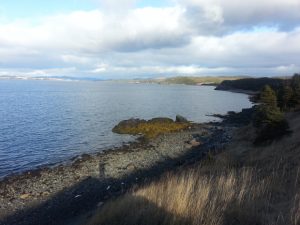
The coastline near Arnold’s Cove. Photo credit: Fay Matthews.
The Isthmus region is located between the Avalon Peninsula and the rest of Newfoundland. It includes communities such as Arnold’s Cove, Goobies, and Chapel Arm. All communities in the region are close to the Trans-Canada Highway. Due in part to this transportation access, the Isthmus region is home to some of the province’s largest industrial developments, including the North Atlantic refinery in Come-by-Chance, the Vale nickel processing facility in Long Harbour, and the Bull Arm Site. Some fishing and fish processing also takes place.
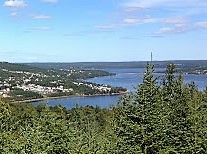
Clarenville seen from Bare Mountain. Photo credit: Our Town Clarenville.
Clarenville is the largest community in all of the regions and is home to many government offices, public services, and retail shopping options. Outside of Clarenville lie many smaller communities such as Port Blandford, Lethbridge, and Hodge’s Cove. There is significant economic activity in Clarenville in sectors like retail and government services, as well as agriculture and timber processing in Lethbridge, and fisheries activity. Some accommodations are also available to tourists passing through the area.
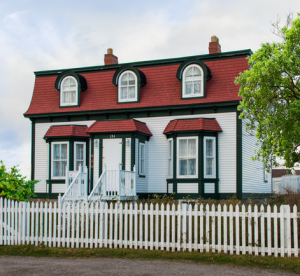
Jubilee House, a historic bed and breakfast restored by Bonavista Living. Photo credit: Bonavista Living.
The Bonavista region is home to significant cultural heritage assets and outdoor opportunities, making it a major tourism destination. Communities like Bonavista and Trinity have begun to recover from the 1992 Cod Moratorium, in part through tourism and related industries. Historically one of the province’s primary fishing areas, the region still relies substantially on fisheries. The arts have become a significant activity in the region, with numerous galleries and artists in the region, as well as the Rising Tide Theatre in Trinity. The Bonavista region is currently in a process of social and economic renewal, with communities such as Bonavista, Elliston, and Port Union emerging from the hardships of the Moratorium through entrepreneurship, place-based tourism, and heritage preservation.
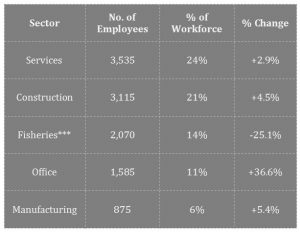
Top 5 Sectors of the Regional Economy
Source: Community Accounts 2016
Reference years 2001-2006 due to change in Census data.
***Fisheries employment includes both fish harvesters and fish processing workers.
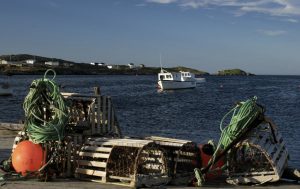
Lobster traps in Melrose. Photo credit: Bill Harris.
A Common Vision for the Region
The vision of the Clarenville-Bonavista-Isthmus Region is of a sustainable region with healthy, educated, prosperous people living in safe, inclusive communities.
Sustainable development for the Clarenville-Bonavista-Isthmus region must be rooted in a holistic and attainable vision for the future that people across the region can believe in. This should include a wide range of social, environmental, and economic goals shaped by the values of the region’s residents in order to guide a common agenda for action. The Regional Council has expressed a holistic sustainability vision, shown above, that guides its approach to regional sustainability. This Report Card uses this vision as its compass for measuring the region’s progress and fostering dialogue among residents about how to bring the region and its communities closer to it.
